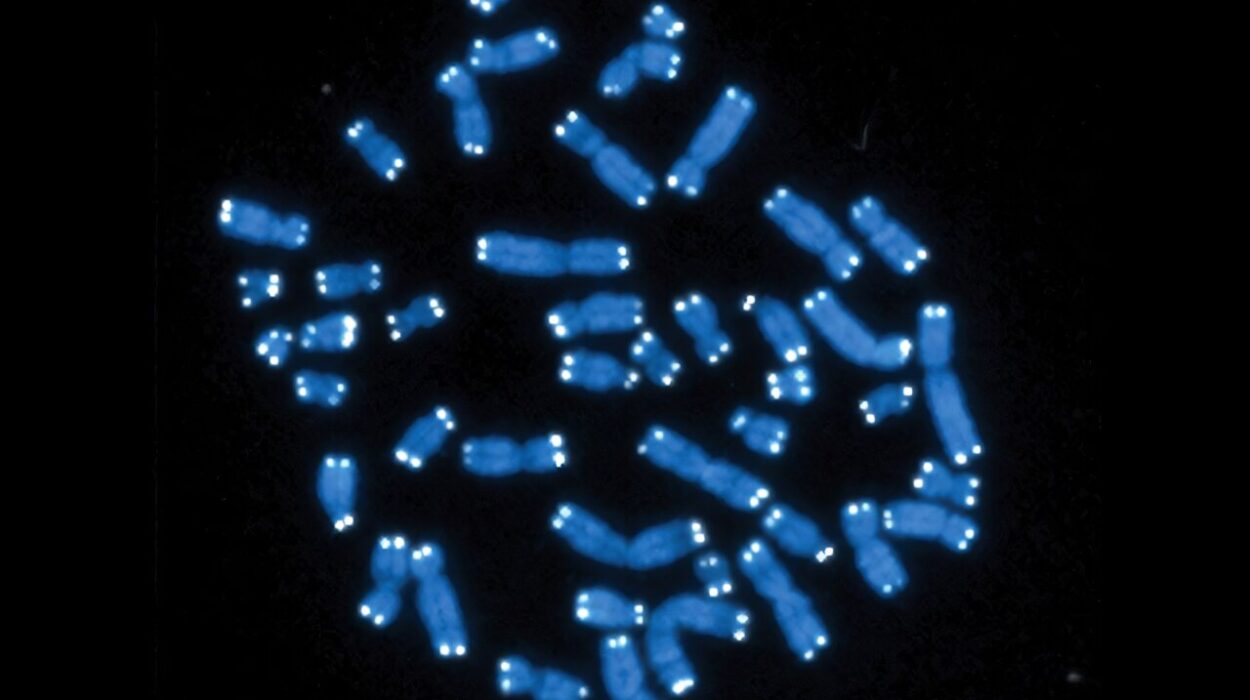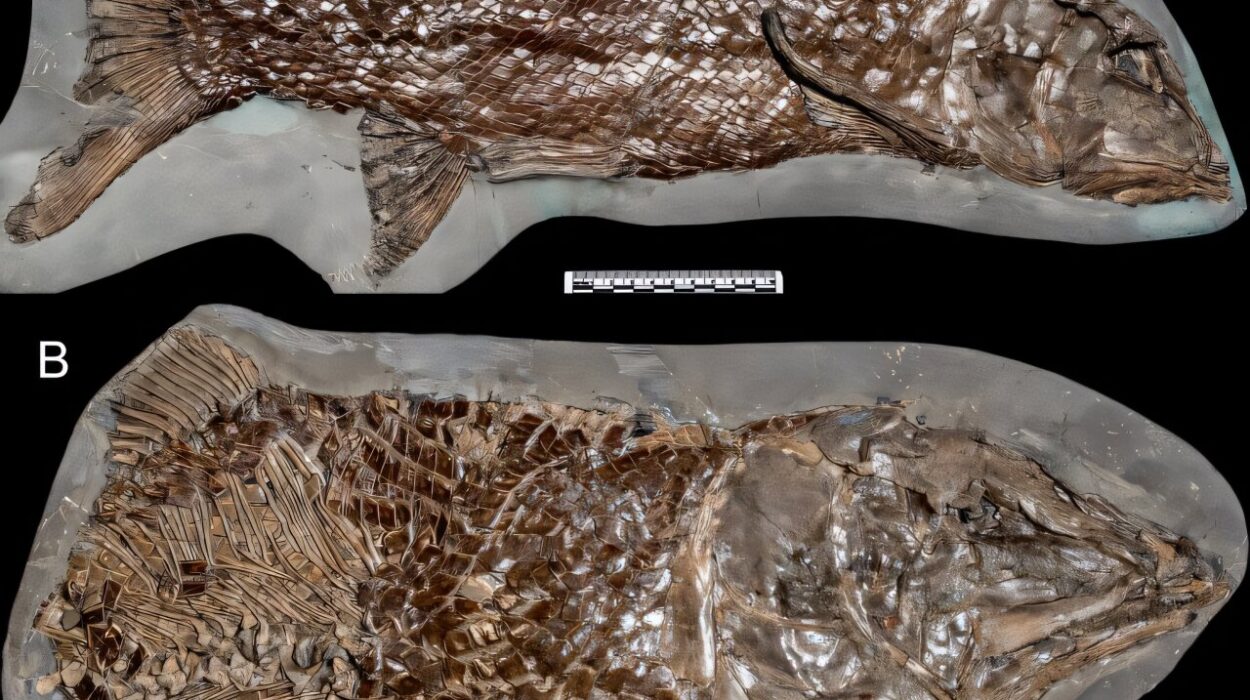For decades, biologists believed that nearly half of our genome was filled with useless clutter—molecular debris left behind by ancient viral infections. This so-called “junk DNA” was thought to be an evolutionary fossil record, inactive and irrelevant. But science, as it so often does, has a way of reinterpreting the past.
In a groundbreaking international study published in Science Advances, researchers from Japan, China, Canada, and the United States have peeled back the curtain on one family of these mysterious genetic elements—called MER11—and revealed a hidden layer of biological sophistication. These sequences, far from being inert, may be critical to how genes are turned on and off, particularly during the earliest and most delicate phases of human development.
What was once dismissed as the genome’s garbage heap may, in fact, be one of its most powerful control panels.
The Virus That Became Us
To understand the significance of MER11, one must first understand the concept of transposable elements (TEs). These are stretches of DNA that can move around within the genome—like mischievous nomads, copying and pasting themselves into new locations. Many TEs trace their origins back to ancient viruses that once invaded the genomes of our distant ancestors.
Over millions of years, these viral hitchhikers became permanent residents. Today, they occupy nearly 50% of the human genome. While most are inactive remnants, some still carry the echoes of their original function. They no longer behave like invaders, but instead have been co-opted by evolution—transformed from parasites into contributors, from invaders into architects.
The MER11 family is one such group. And now, thanks to an innovative classification system, its role in shaping gene expression is finally coming into focus.
A New Lens on Old Code
One of the great challenges in studying transposable elements like MER11 is their overwhelming similarity. Because they often replicate themselves with few changes, TEs are highly repetitive and nearly identical across the genome. This makes it difficult to determine what specific roles individual sequences may play.
But the research team, led by Dr. Xun Chen and colleagues, took a different approach. Instead of relying on traditional genetic databases, they analyzed MER11 sequences through the lens of evolutionary history—tracing how these sequences have changed across species such as humans, chimpanzees, and macaques. This allowed them to group MER11 elements into four distinct subfamilies, labeled MER11_G1 through MER11_G4, from oldest to youngest.
This reclassification turned out to be more than just a new labeling system. It was a biological revelation.
By correlating each subfamily with epigenetic markers—chemical modifications that influence whether a gene is active or silent—the researchers discovered that this evolutionary classification aligned more closely with actual gene regulatory activity than previous models had.
Suddenly, patterns emerged. Hidden among the sea of genetic repetition was a language of control—one that could influence how, when, and where genes are activated during early development.
From Ghosts to Gene Switches
To move beyond correlations and directly test MER11’s influence, the scientists employed a state-of-the-art technique known as lentiMPRA, or lentiviral massively parallel reporter assay. This method allows thousands of DNA sequences to be inserted into cells, where their effect on gene expression can be measured with high precision.
The researchers applied this tool to nearly 7,000 MER11 sequences from humans and other primates, studying how they influenced gene activity in human stem cells and early-stage neural cells. What they found was striking.
Among the four subfamilies, the youngest—MER11_G4—stood out. It demonstrated a potent ability to activate gene expression, especially in the context of early developmental cells. In other words, the newest members of the MER11 family are also the most biologically active.
But the story didn’t end there.
The researchers uncovered that MER11_G4 sequences contained unique regulatory motifs—specific short stretches of DNA that serve as docking stations for transcription factors, the proteins responsible for flipping genes on or off. These motifs are like microscopic switches, finely tuned to respond to developmental cues. As evolution nudged these sequences forward, some gained mutations that enhanced their regulatory potential, particularly in humans and chimpanzees.
Through these subtle changes, ancient viral DNA had become part of the machinery that defines our species.
The Birthplace of Differences
The idea that a virus could help define what makes us human may sound strange, but evolution often works through recycling. By co-opting genetic elements from ancient invaders, organisms can rapidly acquire new traits without inventing them from scratch.
In the case of MER11_G4, the researchers found evidence of species-specific adaptations. The regulatory motifs had evolved differently in humans, chimps, and macaques, suggesting that these viral remnants had been reshaped by natural selection in each lineage.
In humans and chimpanzees, some of these sequence changes appear to increase gene activation in stem cells, hinting that they may have played a role in the evolution of our brains, immune systems, or developmental processes. These changes could even have contributed to speciation, the process by which new species emerge from shared ancestors.
What was once a viral infection may have left behind the seeds of individuality.
Rewriting the Rules of Genetics
This study challenges one of the longest-standing assumptions in molecular biology—that much of our DNA is irrelevant or inert. Instead, it paints a picture of a dynamic genome, where so-called junk is anything but. The DNA we carry is not just a historical ledger, but a living system that continues to evolve, regulate, and respond.
According to co-author Dr. Inoue, “Our genome was sequenced long ago, but the function of many of its parts remains unknown.” With studies like this, that mystery is beginning to dissolve. Transposable elements, especially younger and previously unstudied families like MER11, may hold the keys to understanding not only how life works, but how life changes.
By mapping the evolutionary history and regulatory function of these sequences, scientists are uncovering a parallel genome—a shadow code within the code, invisible to the naked eye, but indispensable to development, identity, and evolution.
The Future of Functional Genomics
As researchers dig deeper into this viral legacy, new possibilities emerge. Understanding the regulatory roles of transposable elements could transform how we interpret genetic diseases, how we engineer stem cells, and how we personalize medicine.
It may even allow us to answer some of the most profound biological questions: Why do certain traits evolve in one species but not another? What makes human development so uniquely complex? How does the genome respond to new environments or stressors?
And perhaps most haunting of all—how much of who we are was shaped by something we never invited in?
The idea that long-dead viruses still echo in the way our genes behave is not just fascinating. It’s poetic. Life, in its relentless push forward, finds ways to turn even its past battles into tools for the future.
Reference: Xun Chen et al, A phylogenetic approach uncovers cryptic endogenous retrovirus subfamilies in the primate lineage, Science Advances (2025). DOI: 10.1126/sciadv.ads9164. www.science.org/doi/10.1126/sciadv.ads9164






